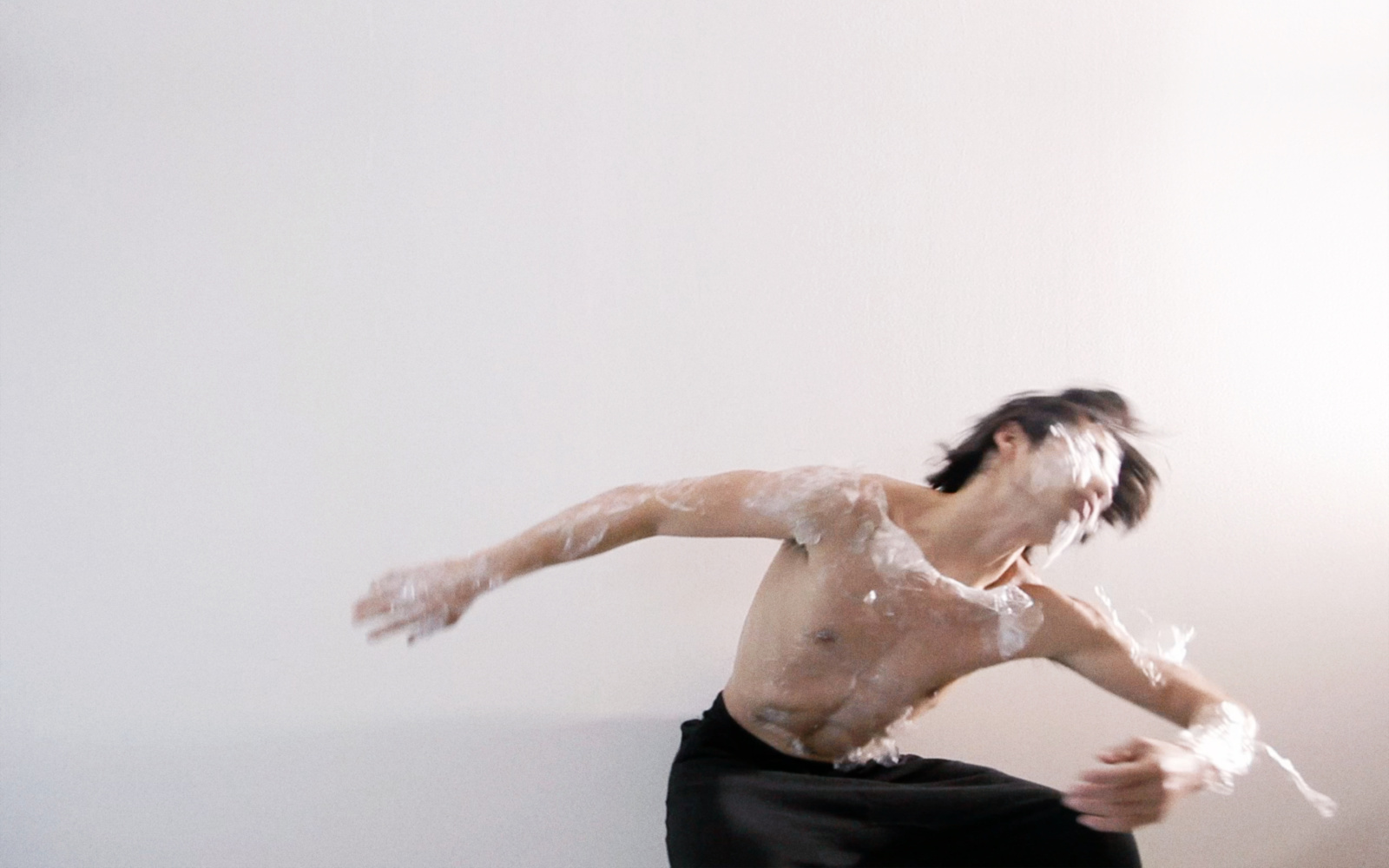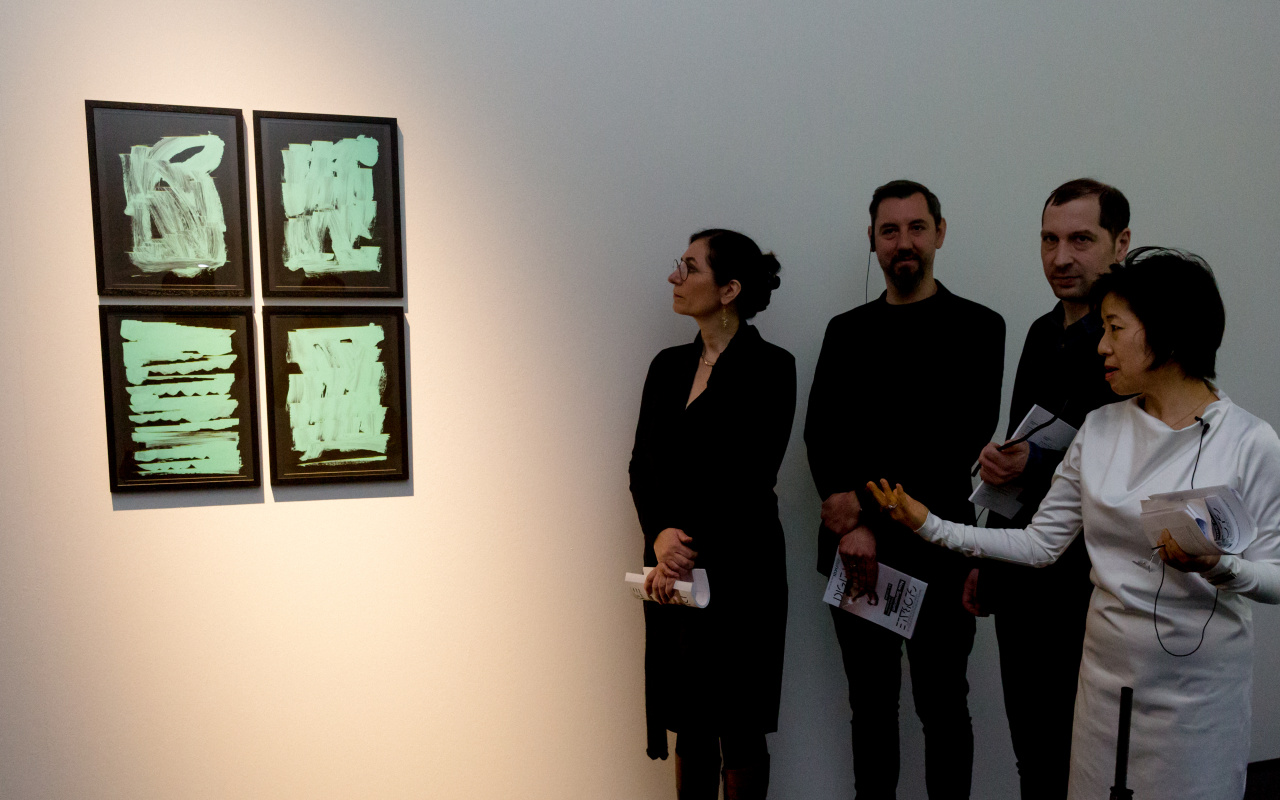Leonardo (2011)
In »Leonardo«, the artist manipulates a portrait-"drawing" machine at a shopping mall by placing a mirror inside the portrait booth, causing the device to create its own portrait. As the machine creates the drawing (in reality a software program and filter that instantaneously processes the photo to make it appear hand-drawn), it displays a video on a screen inside the booth. In the video, an artist's "hand" is seen drawing and a pre-recorded voice (representing the voice of the artist) can be heard saying "uh-oh" when the hand makes a mistake, and, "What a masterpiece!" when it reviews its creation. After the video plays, the machine Outputs a drawing, signed "Leonardo".
Action Painting (200, 266, 400, 720) (2015)
ln »Action Painting«, the artist paints on the scanner surface while it is in motion, trying to catch the scanner light with a brush. This produces fragmented images with overlapping digital artifacts, as well as two simultaneous "recordings" – the artist's recording of the scanner light in paint, and the digital record of the moving hand of the artist.
Time Travel (2009)
In »Time Travel«, the artist used a video camera and a laptop to explore time travel on a train from Bangalore to Bangarapet. At the front of a train car, she installed a video camera pointed out the door. The live video feed from this camera was sent to her laptop placed in front of a second door at the back of the train car. While viewing the laptop, she was able to see approximately one tenth of a second into the future. The work is a sincere attempt at achieving the physically impossible, using a simple apparatus. For a split second, viewers wonder whether they are truly time traveling, before realizing that it isn't the future they are experiencing, but a possible version of the future - or someone else's present. Situating the piece on a commuter train heightens the daily sensation of traveling through two places at one time, or through two times at one place, or both.

